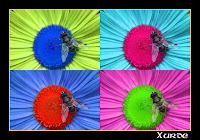STAGE 1: RESEARCH SEMANA 8-11 de marzo
A) INVESTIGACIÓN SOBRE EL TEMA
1. DEFINIR TEMA (CLASICOS, RENACIMIENTO, MODERNISMO, ETC. por grado y por equipo las disciplinas, VISUAL, DANZA, DRAMA, LITERATURA, MUSICA).
2. Fechas y países
3. Acontecimientos históricos
4. Acontecimientos sociales
5. Artistas y obras
6. Movimientos artísticos: Pintura, Drama, Escultura, Moda, Arquitectura
7. Relación de estos movimientos con la situación de MEXICO
B) REUNIR INFORMACION (Entrevistas semana 11-16 de marzo)
Solicitar información a UNA escuela de OTRO PAÍS, buscar la forma de comunicarse (En edmodo pueden buscar maestros con quién hacer este link para que los niños puedan preguntar sobre estos temas).
PUBLICAR INFORMACIÓN EN LOS BLOGS DE CADA GRUPO, EN INGLES Y EN ESPAÑOL, DOCUMENTAR CON ILUSTRACIONES, Y COMENTAR.
2nd
Is an art movement that emerged in the mid 1950s in Britain and in the late 1950s in the United States.[1] Pop art presented a challenge to traditions of fine art by including imagery from popular culture such as advertising, news, etc. In Pop art, material is sometimes visually removed from its known context, isolated, and/or combined with unrelated material.[1][2] The concept of pop art refers not as much to the art itself as to the attitudes that led to it.[2]
For more information take a look around our blog :
http://classsecondeduglogstercom.blogspot.mx/
3rd
ROMANTICISM
For more infromation take a look around to our blog:
http://classthirdeduglogstercom.blogspot.mx/search?updated-max=2012-03-22T07:58:00-07:00&max-results=7
4th
MIDDLE AGE
The age we will investigate include the Celtics, Saxon & Hiberno (200 - 732 AD), Byzantine Art (400 - 1453 AD), Justinian (527 - 565 AD), Islamic Art (622 - 900 AD), Carolingian Art (732 - 900 AD), Ottonian Art (900 - 1050 AD), Romanesque Style (1000 - 1140 AD), and Gothic Style (1140 - 1500 AD).
Take a look around to our blog:
http://classfourtheduglogstercom.blogspot.mx/
5th
THE RENAISSANCE
ART
Renaissance art is the painting, sculpture and decorative arts of that period of European history known as theRenaissance, emerging as a distinct style in Italy in about 1400, in parallel with developments which occurred inphilosophy, literature, music and science. Renaissance art, perceived as a "rebirth" of ancient traditions, took as its foundation the art of Classical antiquity, but transformed that tradition by the absorption of recent developments in the art of Northern Europe and by application of contemporary scientific knowledge. Renaissance art, with Renaissance Humanist philosophy, spread throughout Europe, affecting both artists and their patrons with the development of new techniques and new artistic sensibilities. Renaissance art marks the transition of Europe from the medieval period to the Early modern age.
For more information look our blog:
http://jvs6thgrade.blogspot.mx/
6th
Ancient Greece & Ancient Rome
Is a civilization belonging to a period of Greek history that lasted from the Archaic period of the 8th to 6th centuries BC to the end of antiquity (ca. 600 AD). Immediately following this period was the beginning of the Early Middle Ages and the Byzantine era.
For more information look our blog:
http://classsixtheduglogstercom.blogspot.mx/
7th
POST
IMPRESSIONISM
Post impressionism is the term coined by the British artist and art critic Roger Fry in 1910 to describe the development of French art since Manet. Fry used the term when he organized the 1910 exhibition Manet and the Post-Impressionists. Post-Impressionists extended Impressionism while rejecting its limitations: they continued using vivid colours, thick application of paint, distinctive brush strokes, and real-life subject matter, but they were more inclined to emphasize geometric forms, to distort form for expressive effect, and to use unnatural or arbitrary colour.
Is just one of our topics look for more information in our blog:
http://classseventheduglogstercom.blogspot.mx/






No comments:
Post a Comment